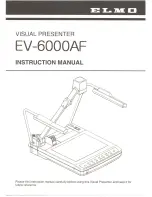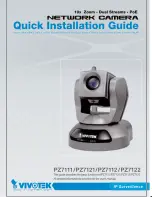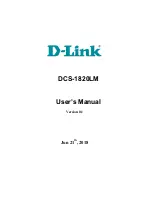
16
DVR Guide
The Digital Video Recorder (DVR) records video and audio to USB storage media and can capture
snapshot images on-the-fly without interrupting recording. It has an internal real-time clock with
battery backup that provides date and time information. Videos and snapshots are saved to a folder
called DCIM on the USB devices. The DCIM folder is created if not present. The videos are recorded as
.ts files and the snapshots are .jpeg files. File names are automatically generated by the real-time clock.
The video bit rate can be tailored to match the user requirements and storage capacity.
The recorded audio comes from an internal microphone behind the front panel. The microphone can be
muted from recording if desired. Text overlays reflecting current date and time can be applied to
appear in the recorded video. A single line of user defined text comments can be overlaid in the video.
There are 5 user entered custom text lines.
The DVR has an internal 16GB USB storage device. This internal memory will store at least 8 hours of
video. There is a USB jack on the panel for an external storage device. There is no limit on capacity of
the USB storage devices; however, the devices need to be FAT 32 format. The DVR will simultaneously
record to both the internal and external USB storage devices.
When either internal or external memory
becomes full, an on-screen message will prompt the user to address the capacity of the internal or
external memory before the recording option will resume.
There is also a USB jack on the panel for plugging in a standard PC-type USB keyboard. A wireless mini
keyboard is supplied with the
DVR. There is a black ‘receiver’ for the provided mini keyboard inserted in
a USB space on the control unit. It will have two letters on it that correlate with the mini keyboard.
Without the receiver plugged into the control unit, the keyboard will not be able to function.
NOTE:
the
keyboard and its USB receiver are paired and cannot be mixed with another set.
Keyboard Use and Charging
The internal battery is a non-replaceable Polymer Lithium-ion type. If no keys are pressed for more than
3 minutes, t
he keyboard goes into Sleep Mode. Because of Sleep Mode, the keyboard’s battery will last
many hours and even many days on one charge. The battery will retain a charge in Sleep Mode from
500 to 700 hours. To re-charge the battery, plug the charging cable into the keyboard and into any
standard USB jack. The charging cable can be plugged into the RCAM panel to charge the battery and
simultaneously operate the keyboard; however, the keyboard receiver must be plugged in to either the
RCAM panel or the female-USB jack on the charging cable. The Green Power LED will flash when the
battery power is low. The Red Battery LED will light up when the keyboard is being properly charged.















































